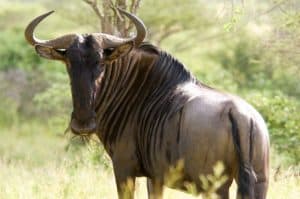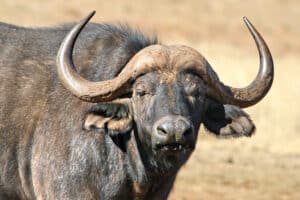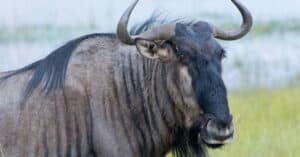Continue reading for our analysis...

One wildebeest’s leisurely walk quickly takes a turn for the worse as seen in this video, showing what happens when it comes across a pride of lions. The clip begins by showing a wildebeest in a scenic savannah. As the camera pans to follow the animal, a pride of lions can be seen in the background with their eyes locked on the wildebeest. In a tense moment, the wildebeest slowly walks away in an attempt to create some distance from the lions.
When it seems like the wildebeest has walked a safe distance from the lions, the pride stands up and begins chasing the animal. In just a few seconds, a lion makes contact with the animal, dragging it to the ground with a few bites.
After both animals hit the ground, the rest of the pride joins in, taking bites and grabbing at the huge beast. Eventually, the wildebeest is inundated with lions, unable to move. The video ends by showing the pride of lions, cheerily enjoying their kill.
How Fast Are Lions?
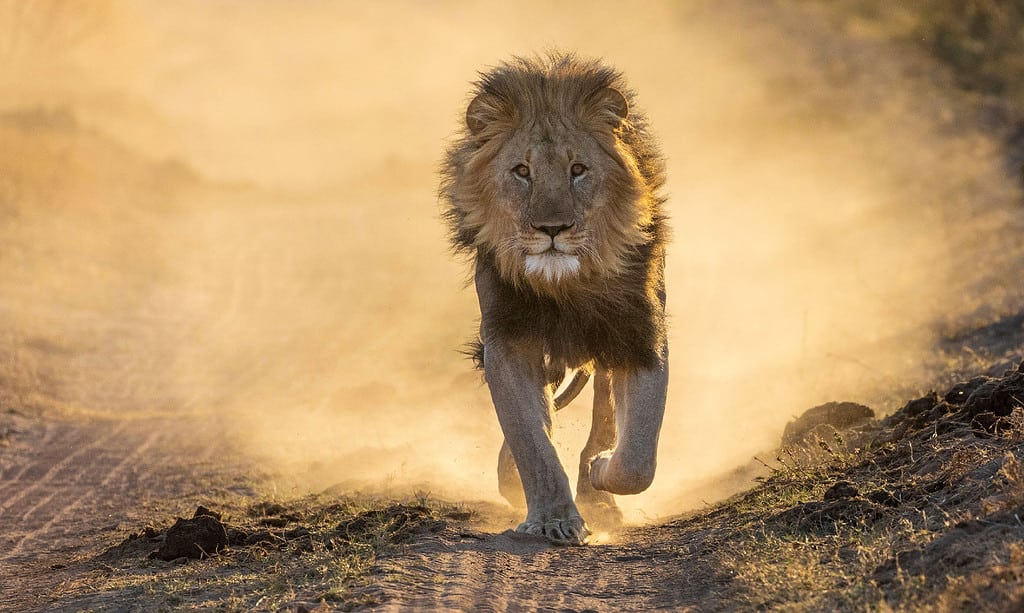
When sprinting, lions can reach speeds of up to 50 mph.
©iStock.com/Wirestock
Lions are extremely fast land predators. Most sources cite their top speeds at around 50 mph, which is fast for such a large predator. For this reason, lions can be extremely dangerous at close range.
Most animals that lions hunt can also reach speeds of 50 mph, if not more. This means that most cases are evenly matched for lions and their prey. Additionally, most of their prey can run that fast for long distances, whereas lions can only sprint for short distances. To get around this, many lions will lie in wait for their prey, or hunt in larger packs.
Lying in wait is a great strategy against wildebeest because they have fairly poor eyesight. As shown in the video, a wildebeest is not likely to see lions if they are at a distance.
How Do Wildebeests Protect Themselves?
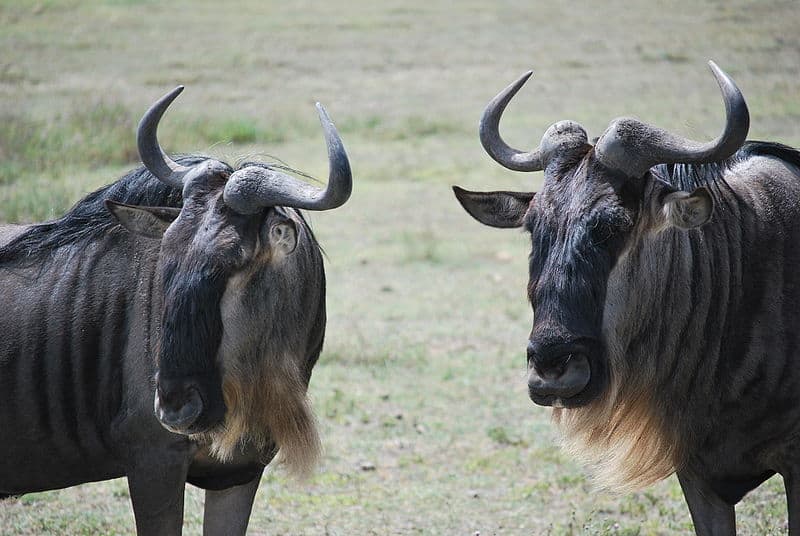
Wildebeests have remarkable endurance when it comes to evading predators when being hunted.
©Chad Rosenthal from Jerusalem, Israel, CC BY 2.0, via Wikimedia Commons – Original / License
As a prey animal, wildebeests have to be pretty scrappy to survive. Additionally, since wildebeests are migratory animals, they experience an increased probability of having interactions with predators. With this in mind, wildebeests exhibit a few key behaviors to defend themselves.
To begin with, wildebeests have extreme stamina when it comes to running from predators. In addition to being able to run at high speeds, they can run for long distances. In comparison, most of their predators, including lions, are only accustomed to sprinting for short distances. Thus, if a wildebeest has a head start in comparison to its predator, it normally can get away safely.
If a wildebeest is unfortunately caught by its predator, it can also resort to fighting and struggling. The average adult wildebeest has extremely large and strong leg muscles, which it can use to kick and wriggle from the jaws of a predator. If the predator doesn’t have a good grasp on the prey, there is a good chance that it could wiggle free.
Additionally, they also have long horns that can be used for defense. By thrashing their head around, their horns can easily poke and prod at their predators, giving them a chance to escape!
Thank you for reading! Have some feedback for us? Contact the AZ Animals editorial team.




